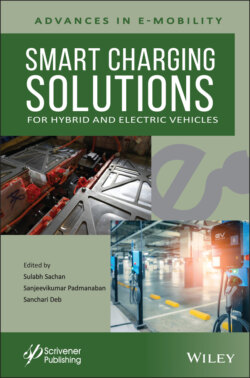Читать книгу Smart Charging Solutions for Hybrid and Electric Vehicles - Группа авторов - Страница 29
1.5.3 Aggregators
ОглавлениеAs the name suggests, aggregators aggregate EVs. Aggregators require group EVs connected at different charging infrastructure areas so that visible, beneficial impacts can be created in the utility grid. The aggregator interface is between the PSO and connected EVs at charging stations, homes, or any location to perform bidirectional or unidirectional charging. Further, the aggregator coordinates with the market to enable the participation of EVs. The aggregator provides the controller with required information to decide whether to enact generation or storage systems and provide ancillary services to the grid [49].
In some cases, aggregators also act as decision-makers. For example, suppose the electricity pricing information is coordinated by the aggregator. In that case, the decision to command the charging locations based on pricing is performed by aggregators [50].
A smart charging system might have one or multiple aggregators. EV owners have options to select their aggregators based on the benefits conferred. The aggregators help the PSO perform day-ahead planning. The planning includes deciding to buy or sell electricity prices; the aggregators’ data is sent to the PSO to help with on demand forecasting. The uncertainties involved in EV charging, such as arrival and departure timings, the power required to charge or available to discharge, and preferences of slow or fast charging are also dealt with by the aggregator. The uncertainty management involves the decision to store energy in local ESS during peak load hours and sell to the EV owners at any time. The use of local ESS helps minimalize the impact of charging on the utility grid [51-53]. The information exchanged by the aggregator requires robust communication systems to monitor and operate [54]. The details of the communication systems are explained in the next subsection.
